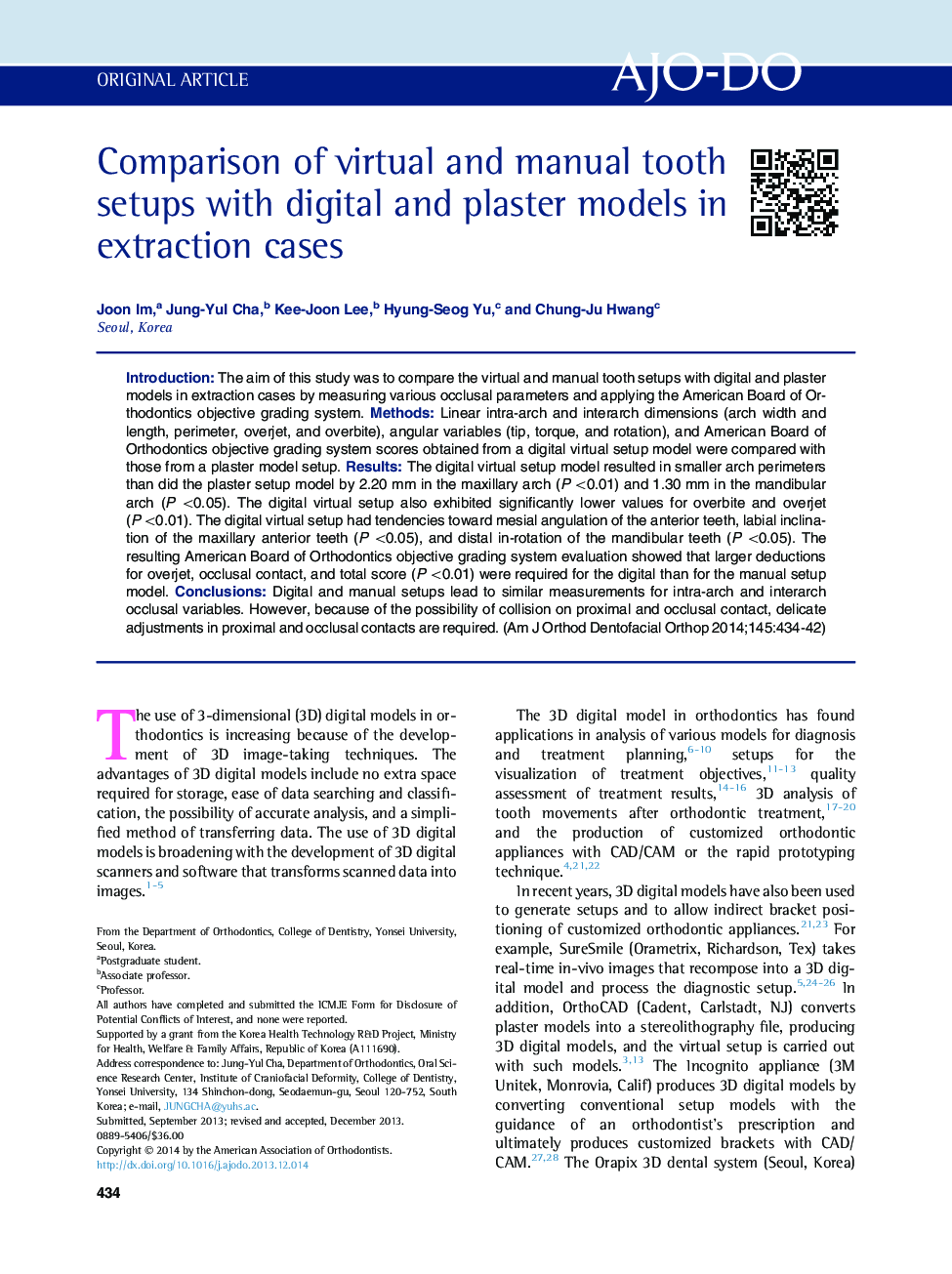| Article ID | Journal | Published Year | Pages | File Type |
|---|---|---|---|---|
| 3115974 | American Journal of Orthodontics and Dentofacial Orthopedics | 2014 | 9 Pages |
IntroductionThe aim of this study was to compare the virtual and manual tooth setups with digital and plaster models in extraction cases by measuring various occlusal parameters and applying the American Board of Orthodontics objective grading system.MethodsLinear intra-arch and interarch dimensions (arch width and length, perimeter, overjet, and overbite), angular variables (tip, torque, and rotation), and American Board of Orthodontics objective grading system scores obtained from a digital virtual setup model were compared with those from a plaster model setup.ResultsThe digital virtual setup model resulted in smaller arch perimeters than did the plaster setup model by 2.20 mm in the maxillary arch (P <0.01) and 1.30 mm in the mandibular arch (P <0.05). The digital virtual setup also exhibited significantly lower values for overbite and overjet (P <0.01). The digital virtual setup had tendencies toward mesial angulation of the anterior teeth, labial inclination of the maxillary anterior teeth (P <0.05), and distal in-rotation of the mandibular teeth (P <0.05). The resulting American Board of Orthodontics objective grading system evaluation showed that larger deductions for overjet, occlusal contact, and total score (P <0.01) were required for the digital than for the manual setup model.ConclusionsDigital and manual setups lead to similar measurements for intra-arch and interarch occlusal variables. However, because of the possibility of collision on proximal and occlusal contact, delicate adjustments in proximal and occlusal contacts are required.
